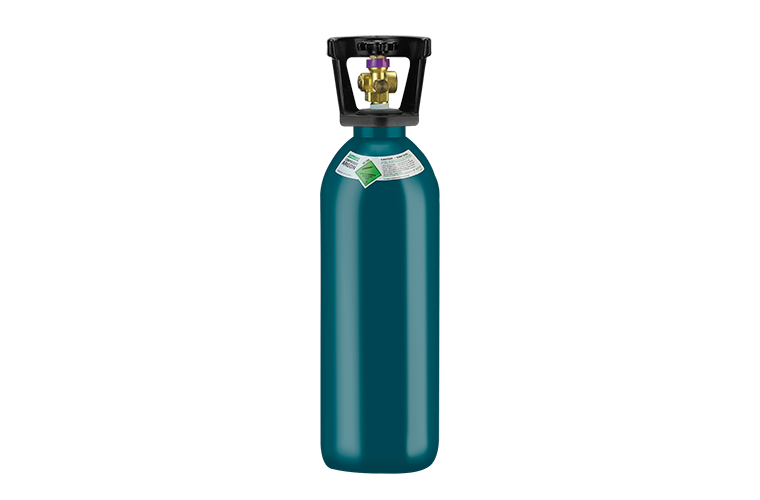Argon - D size
What is Argon?
Argon is a non-toxic, colourless, tasteless, and odourless gas that occurs naturally in our atmosphere. It is the most profuse of the atmosphere’s rare gases. This gas is typically supplied, stored, and transported in high-pressure gas bottle cylinders. Argon is a noble or inert gas, which means it does not form chemical reactions with other gases.
- Welding – specifically Gas Metal Arc Welding (GMAW aka MIG) and Gas Tungsten Arc Welding (GTAW aka TIG)
- Creating inert atmospheres
- Filler gas for incandescent and neon lamps
- Plasma cutting (mixed with hydrogen)
- Gas chromatography
- Spectometry
Argon is non-toxic, and is not flammable, which is precisely why it is used to create a safer environment for welding. However, if inhaled in large quantities, argon can cause asphyxiation. For this reason, when working with argon, be sure to work in a well-ventilated area and monitor the level of oxygen within your spaces.
Is argon gas harmful to humans?
Argon gas is harmful if it is inhaled in excessive concentrations, for instance, in a confined space or over extended periods. Inhaling too much argon gas can cause dizziness, fatigue, and can eventually cause asphyxiation . As argon is odourless, it can be difficult to detect.
Is argon good for humans?
Argon is a non-toxic gas, so technically it isn’t harmful in itself. It is only bad for us when too much is inhaled or as it displaces oxygen within a particular area. Safety considerations need to be understood and applied when working with argon.
What is argon?
Argon is a colourless, tasteless and odourless gas that makes up around 1% of the Earth’s atmosphere. This inert gas is typically supplied, stored, and transported in high-pressure argon gas bottle cylinders.
What is argon gas used for in welding?
Argon is used as a “shielding gas” in the professional welding industry. It is used in MIG welding of aluminum, where the metal thickness ranges from 1mm to 14mm. In TIG welding of aluminum, where the metal thickness ranges from 1mm to 3mm and stainless steel ranges with a metal thickness from 1mm to 6m.
Is argon gas flammable?
No, argon is not flammable.
Where can I find Argon in Australia?
You can rent Argon bottles and source Argon from a range of our local branches. Browse our branch locator here and contact your nearest branch directly.
Supagas uses cookies to understand how people use our website and to give you the best experience possible when visiting our website. Read our Cookie Notice for more information about our use of cookies.

 Instagram
Instagram